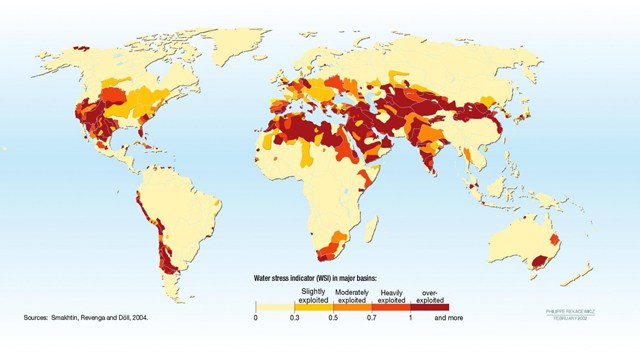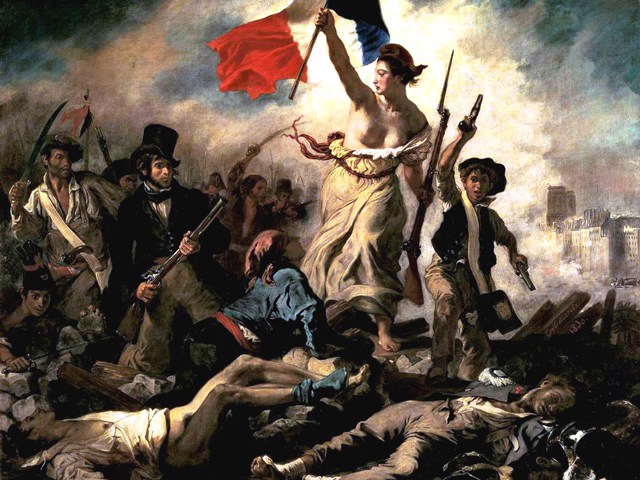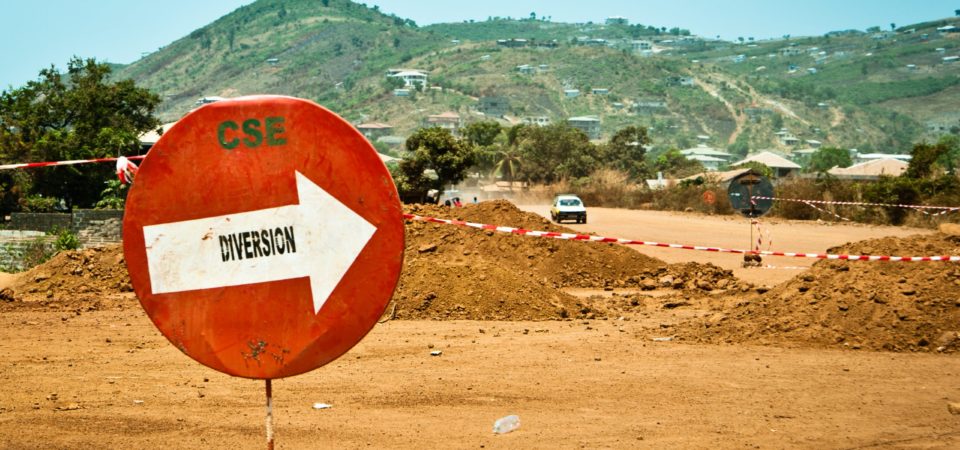This article was originally published by Planet Experts.
The original post is available here.
There are two directions the connection between conflict and the environment can take that influence security. The degradation of the environment can cause conflict and a reduction in security; or conflict can destroy the resources and services provided by the environment, which also compromises security.
Conflict influences the environment by direct damage as well as by disruption of productivity and responsible environmental and resource practices. Conversely, poor environmental and resource practices can increase vulnerability and the risk of conflict. In either case, the most severe expression of conflict is war.

Recent wars give a clearer view of the destructive power humanity has over the natural world. Modern warfare has only increased its destructive capability, culminating with biological and nuclear weapons.
These weapons and tactics are a direct and indirect threat to civilian populations. Weapons of mass destruction (WMDs) by definition have expanded the area of collateral damage, increasing the destruction of the environment, resources and institutions that civilian populations depend upon for daily survival.
Technology allows conflict by remote control. This removes immediate feedback on both the humanitarian and environmental damage. The horrors of conflict begin to appear more and more abstract and isolated from commonly accepted social mores or inhibitions.
Despite international prohibitions, defoliant spraying, poisonous gas, drones, carpet bombing and firebombing are only a few of the tactics used in recent wars. Their proliferation and use is an immediate and long-term threat to civilian populations.
Conflict may utilize strategic political and economic means. Resources, financing and trade may be manipulated for strategic advantage. An ally may be granted special privilege. Tariffs and embargos of a strategically vital resource can strangle the productive capacity, adaptability and resilience of an enemy. The environment has been weaponized, militarily and politically.
The destructive potential of modern conflict now expands well beyond the immediate areas of conflict. The consequences now spill over borders and involve parties with no direct “skin in the game.” Globalization and trade have formed partnerships where even a minor conflict in a small area can involve more powerful players and lead to far greater regional destabilization.
By the 1960s, conflict scholars and Departments of Defense began assessing the risk of a quick death by nuclear holocaust as well as the slow, but inexorable death from pollution, population dynamics, and disruption of critical planetary systems like global warming and subsequent climate change.
By the 1980s, and the Chernobyl disaster, Soviet Premier Gorbachev called on the world to rise above Cold War thinking. He argued that the risks of planetary environmental damage posed a threat just as serious as nuclear holocaust.
In 1987, the World Commission on Environment and Development (WCED) recognized the need to consider “Our Common Future” on a finite planet. This resulted in the most widely accepted definition of sustainable development by the commission’s chair, Gro Brundtland:
“Sustainable development is development that meets the needs of the present without compromising the ability of future generations to meet their own needs.”
In the 1990s, a few scholarly studies began to consider the opposite of conflict impact on the environment. Their research focused on the impact of environmental degradation in creating conflict.
Environmental degradation and disruption began to be recognized as a significant cause or magnifier of conflict and breaches in security, including:
- Soil Erosion
- Water scarcity
- Overfishing
- Deforestation
- Pollution (air, water, land)
- Resource depletion (Natural Capital)
- Species Diversity (6th Mass Extinction)
Disruption and scarcity are not the only motives for conflict. Resource-rich regions may not have the capacity to develop their resources. Opportunistic nations with wealth and technology often take unfair advantage. Wealthy entities may make deals with those in power with little concern for the equitable distribution of the profits resulting from resource development. Consequently, many developing nations have only become rich at the top from foreign investment, while the average citizen reaps little or no gains.
When environmental crises such as floods, droughts or catastrophic weather events occur, people will seek help from their leadership. Those who have profited the most from foreign investment may not be willing to open their coffers for assistance. Motivation for this failure to provide assistance may be territorial, economic, political, tribal, religious, ethnic or any combination. Historically, the predictable result is civil strife and conflict. Syria is only one example-taking place around the world today.
Puerto Rico is a U.S. territory. The inhabitants are U.S. citizens, though they cannot vote and only have limited representation in the nation’s capital. [In 2017] the island first suffered a glancing blow by Hurrican Irma, a destructive Category 5 storm. Irma left over 1 million people without power. Vital infrastructure was severely damaged. Before there was time to recover, hurricane Maria plowed right over the top of the island. Puerto Rico was demolished.

Maria is regarded as the worst natural disaster on record for the Virgin Islands, Dominica and Puerto Rico. All of the power, schools, medical facilities, and infrastructure were destroyed. There were 3.4 million thrown into a desperate humanitarian crisis.
The Syrian Civil War and Puerto Rico have more in common than would first meet the eye. Poverty, desperation and grim prospects for the future have collapsed the trust between the government and the governed.
In the last 11,500 years, every civilization in history has risen and fallen. The collapse of civilizations often follows a recognizable pattern. Leaders become lords. Lords become Emperors. Emperors become gods. The elite begin to feel blessed, entitled and superior. Instead of the leadership serving the nation, the nation serves an insatiable, often hereditary, elite class.
It is easy for those with less education, or who live in relative poverty, to appear less capable than the more privileged class. The privileged become isolated, protected and less and less aware of the needs of the governed or the resources and services provided by the environment on the backs of the workers. The gap widens. The priorities of the privileged class begin to overtake the basic needs of the laboring class. The general population may not be given affordable access to adequate health care, food and shelter. Lack of access is usually due to economic factors. The economic split begins to widen in favor of those who already have the most.
Today, eight men have more wealth than 50 percent of the world’s population.
A “failed state” occurs when the basic needs of the populace are no longer met. Collapse occurs when the state can no longer recover security; or a just and egalitarian distribution of prosperity.
Where is the United States in this arc of history? The bubble of privilege is growing in America. Class segregation widens through economic disparity.

A corporate mentality dominates U.S. policy. Stewardship gives way to the quarterly profit report. This perspective views natural resources as untapped, economic opportunity. Corporations and the rich are insulated by their wealth. Those living in the bubble of privilege are increasingly unaware that the degradation of the natural environment threatens the security of everyone. This is a false sense of security. The protection of wealth is limited. Throughout recorded history, the connection between the environment and security has brought down even the most powerful.
W. Douglas Smith is an environmental scientist, environmental diplomat, explorer, educator and a retired Senior Compliance Investigator for the U.S. Environmental Protection Agency, where he worked for 36 years.
This article was originally published by Planet Experts.
The original post is available here.
References: “Sapiens” by Yuval Noah Harari, 2015; “The Environment and World History by Edmund Burke III and Kenneth Pomeranz, 2009; “One With Nineveh” by Paul and Anne Ehrlich, 2004; “The Rise and Fall of Nations” by Ruchir Sharma, 2016; “Collapse” by Jarred Diamond, 2005; “The Fall of the Roman Republic” by Mary Beard, 2011; The United Nations Sustainable Development Goals (SDGs), Conference of the Parties (COP21) and the Paris Accords 2015; Forbes Magazine 2018.
The MAHB Blog is a venture of the Millennium Alliance for Humanity and the Biosphere. Questions should be directed to joan@mahbonline.org
MAHB Blog: mahb.stanford.edu/blog/environment-conflict-security/
The views and opinions expressed through the MAHB Website are those of the contributing authors and do not necessarily reflect an official position of the MAHB. The MAHB aims to share a range of perspectives and welcomes the discussions that they prompt.
